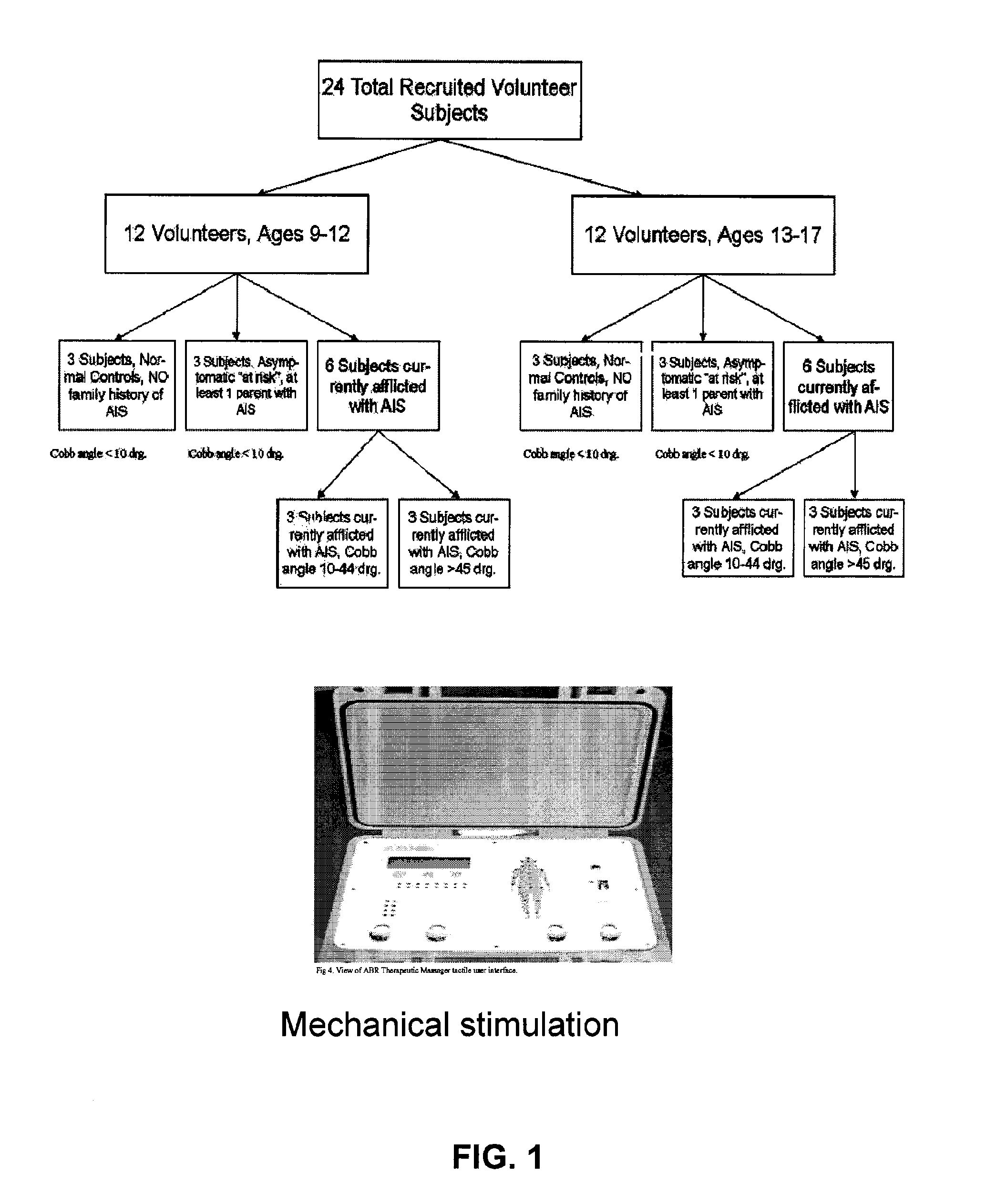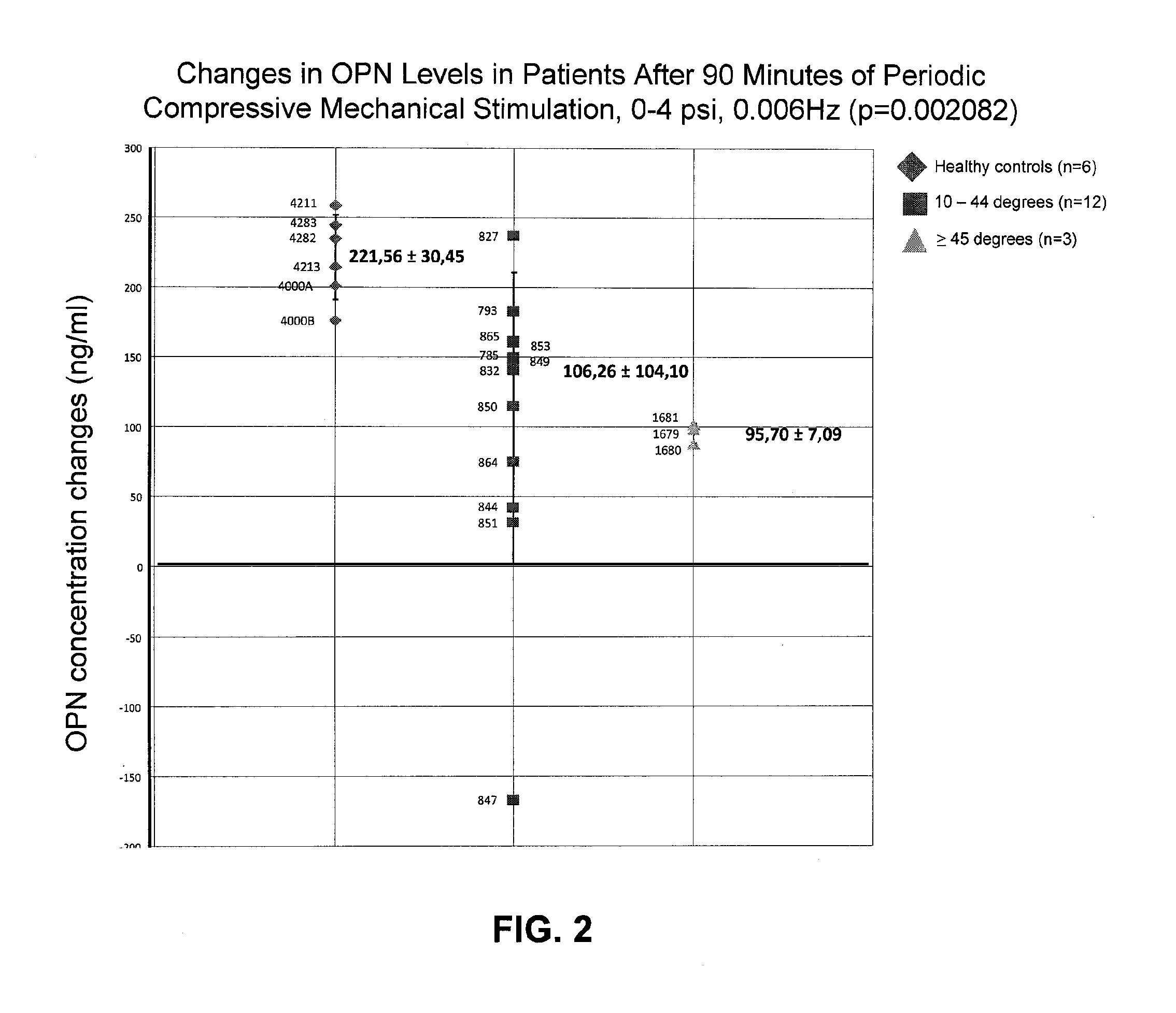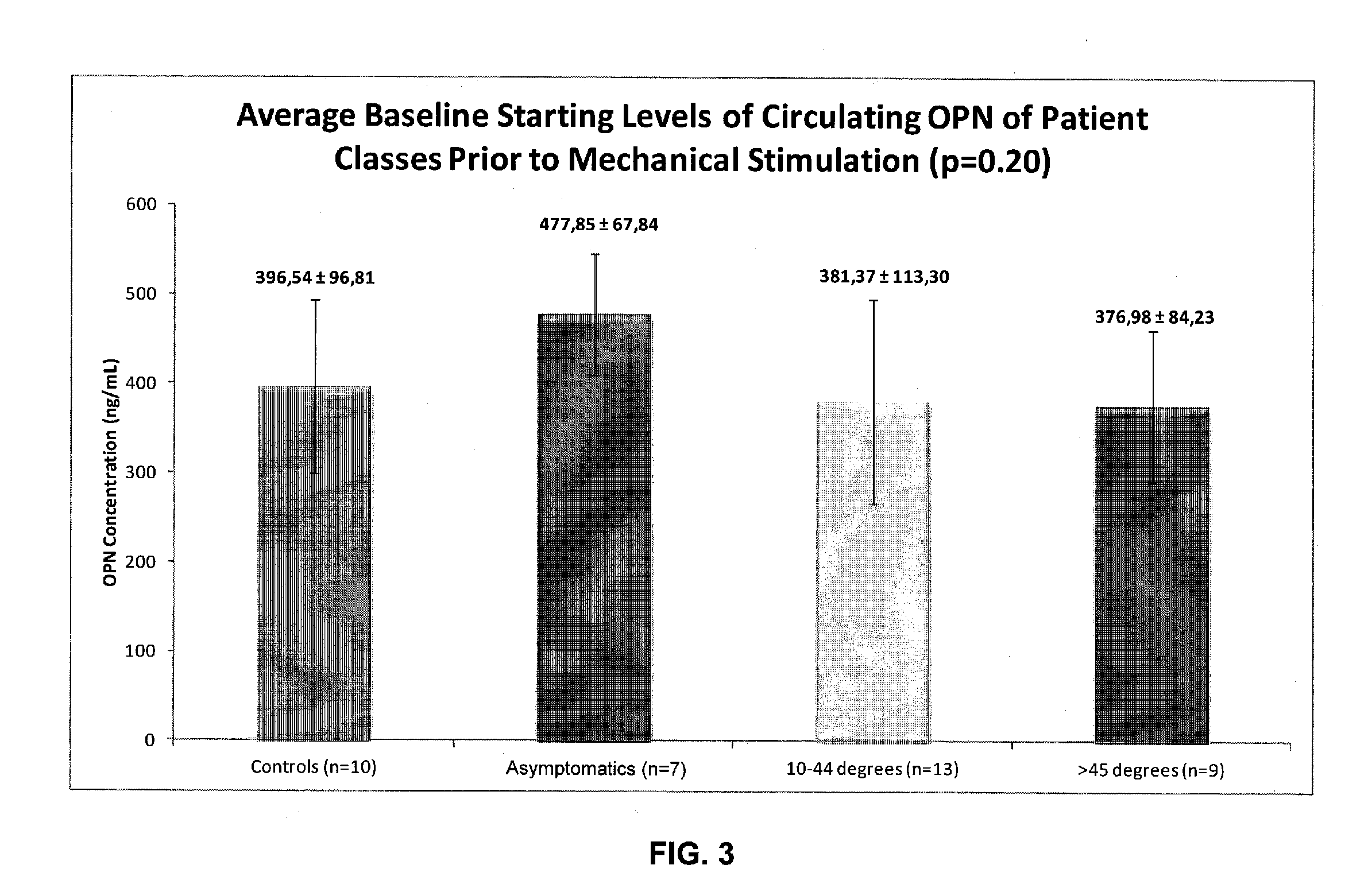Biomechanical-based methods of diagnosing scoliosis
a biomechanical and scoliosis technology, applied in the field of biomechanical-based methods of diagnosing scoliosis, can solve the problems of delayed and less-than-optimal treatment, significant psychological and physical morbidity, and no method approved by the fda yet to identify children or adolescents
- Summary
- Abstract
- Description
- Claims
- Application Information
AI Technical Summary
Benefits of technology
Problems solved by technology
Method used
Image
Examples
example 1
Materials and Methods
[0058]Twenty-one (21) test subjects between the ages of 9-17 were recruited, each of whom fall into one of 3 subject groups: i) surgical cases (pre-surgery, Cobb angle≧45° (n=3), ii) moderately affected cases (Cobb angle 10-44°) (n=12); and iii) healthy controls (n=6). The clinical characteristics of the recruited subjects are presented in Table II below. An overview of the experimental design is depicted in FIG. 1 and further described in more details in Example 3 below.
[0059]
TABLE IICLINICAL CHARACTERISTICS OF SUBJECTS RECRUITED BEFORE OCT. 4, 2010Patient RandomCharacteristicsIDGenderAge (Years)Clinical Group1679Female13AIS≧45°1681Female13AIS ≧45°1680Female15AIS≧45°827Female9AIS10-44°793Female10AIS10-44°844Female10AIS 10-44°832Male11AIS10-44°865Female11AIS 10-44°853Female11AIS 10-44°850Female14AIS 10-44°847Female15AIS 10-44°785Male16AIS10-44°851Female16AIS 10-44°864Female16AIS10-44°849Male17AIS10-44°4211Female10Healthy Control Subjects4282Male12Healthy Control...
example 2
Results
[0062]As shown in FIG. 2, OPN responses can be provoked in vivo by bodily-applied mechanical force. A >2-fold difference (p=0.002082) was detected in the provoked OPN response of the control patient group average (n=6) vs. that of the surgical case group (n=3) after 90 minutes. In addition, the moderately affected group (n=12) response average was also lower as compared to that of the controls.
example 3
Materials and Methods
Study Population
[0063]The internal review board of CHU Sainte-Justine approved the study. Parents or legal guardians of all study participants gave their informed written consent, and minors their assent. Subjects were recruited from among the general patient population of the orthopaedic clinic of Sainte-Justine.
[0064]Between January 2010 and March 2011, a total of 38 subjects (mean age 13.69±2.25) of various ethnicities were recruited including the 21 subjects listed in Table II above. Four particular classes of patients aged 9-17 were sought: i) controls (mean age 13.87±2.41) (n=10); ii) asymptomatic “at risk” subjects (n=7) (mean age 13.16±2.78); iii) moderately affected (Cobb angle 10-44°) (mean age 13.43±2.50) (n=13); and iv) severely affected individuals (Cobb angle≧45°) (mean age 14.26±1.27) (n=9).
[0065]A person was deemed to be affected if history and physical examination were consistent with the diagnosis of idiopathic scoliosis and a minimum of a ten ...
PUM
| Property | Measurement | Unit |
|---|---|---|
| Cobb angle | aaaaa | aaaaa |
| Cobb's angle | aaaaa | aaaaa |
| Cobb's angle | aaaaa | aaaaa |
Abstract
Description
Claims
Application Information
 Login to View More
Login to View More - R&D
- Intellectual Property
- Life Sciences
- Materials
- Tech Scout
- Unparalleled Data Quality
- Higher Quality Content
- 60% Fewer Hallucinations
Browse by: Latest US Patents, China's latest patents, Technical Efficacy Thesaurus, Application Domain, Technology Topic, Popular Technical Reports.
© 2025 PatSnap. All rights reserved.Legal|Privacy policy|Modern Slavery Act Transparency Statement|Sitemap|About US| Contact US: help@patsnap.com



